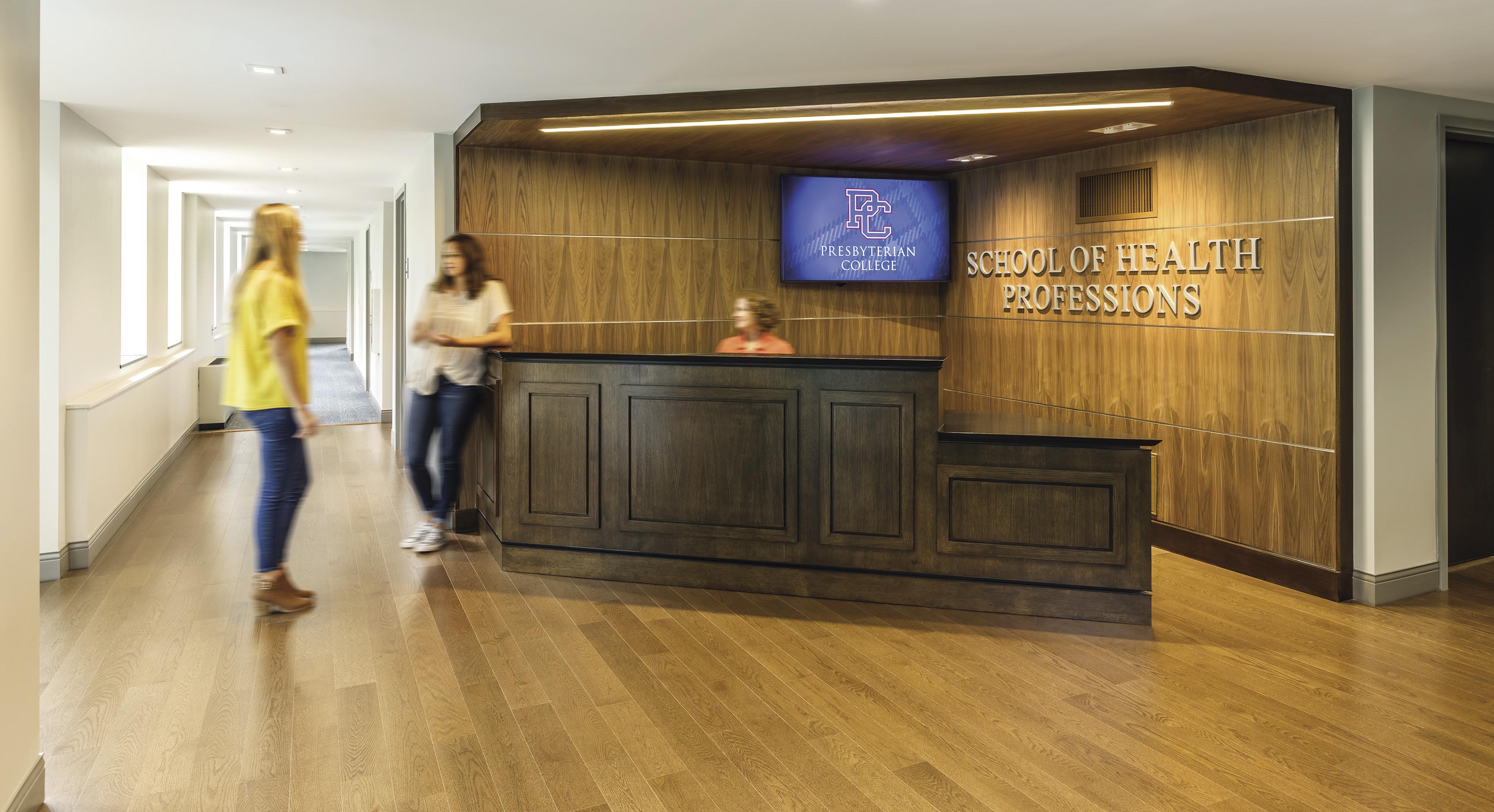
3 minute read
PC’s Occupational Therapy Program Occupies a Repurposed and Renovated Bailey Hall
It is not unusual for Presbyterian College alumni to return to campus and give family members or friends tours of their old haunts. Those who called one particular residence hall home during their college years, however, are in for a great surprise.
The College’s newest venture into the health sciences—the new occupational therapy doctoral program—occupies the newly renovated and vastly repurposed Bailey Hall thanks to funding from a U.S. Department of Agriculture loan that also allowed PC to build three new residence halls and renovate Springs Campus Center and Laurens Hall.
Facing PC’s historic West Plaza, Bailey Hall was built in 1955 to house nearly 100 students. Outside, aside from a new main entrance, the building maintains its traditional Georgian architecture. Inside is another story. Bailey was entirely gutted, and new walls were constructed to accommodate the OT program’s needs.

The first floor houses offices for faculty and staff and the program’s environmental simulation center. An adapted bathroom, a driving simulator, and a simulated apartment, grocery store, and ATM that allows students to not only learn techniques necessary for future treatment but also is expected to be used by local occupational therapists for treatment of their own patients.

Environmental Simulation Center: This is the centerpiece of the OT Program, which houses a driving simulator, a modified bathroom, an apartment with a kitchen, a washer and dryer, and a small grocery store with an ATM.
“The environmental simulation center is unique in the sense of having a mock grocery store sponsored by KJ’s and the ATM Sponsored by TD Bank allowing us to expand on both Activities of Daily Living and Instrumental Activities of Daily Living,” said Dr. Ben Herz, program director and associate professor of occupational therapy. “That, coupled with the driving simulator, makes the center unique to our needs and allows for students to gain experience in places they may not have until they get to a specific clinic.”

The new Bailey Hall houses three large classrooms and one smaller class space. All classrooms are equipped with the ability to record lectures and have modular tables and chairs.
Four classrooms are housed on the second floor—each equipped with 85-inch monitors and the ability to record lectures. The top floor has three laboratories—an orthopedic lab, a technology lab, and a neurology/pediatric lab. Each lab is equipped with a variety of teaching and learning tools specific to each area. For example, there are treadmills and examination plinths in the orthopedic lab; equipment for teaching splintmaking and bandaging in the technology lab; and mat tables and sensory integration treatment in the neurology and pediatrics lab.

The Orthopedic Lab: The lab is used for orthopedics, physical agent modalities, neurology, kinesiology, and assistive technology. This space will also be used for treatment, evaluations, wound care, hot and cold therapy, and electrical modalities.
“Our program is to train the best occupational therapists we can to go out and treat the public,” said Herz. “The more experience we give the students with specialized equipment, the better they can handle the daily treatment and expound on their experience through their own creativity.”
The newly renovated Bailey Hall, while impressive, features personal instruction on what it really means to be an effective occupational therapist, according to Herz.
“A building is a structure that allows the student to engage in what might be called a utopian environment in many cases,” he said. “What our building allows us as educators to do is give students, and eventually graduates, the flexibility to understand and create the various aspects of Occupation and Occupational Therapy that can assist a client in becoming independent. … Teddy Roosevelt stated that a person does not care how much an individual knows until they know how much they care. That is where we differ as a profession and how we achieve our success—through education, creativity, and valuing what a client values to assist them in being independent.”


Neurology and Pediatric Lab: This lab includes a place for floor mat work, swings, a ball pit, seating and positioning, ambulation, transfers, and wheelchair mobility.











